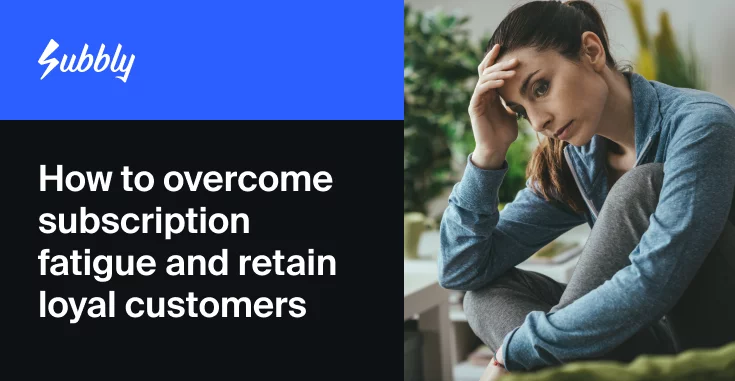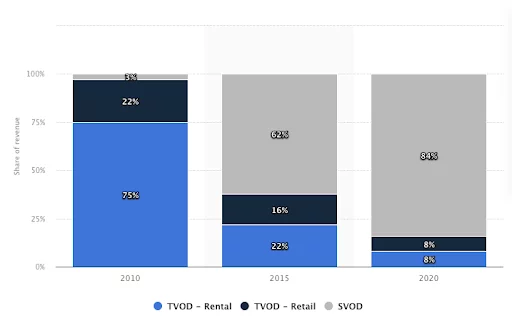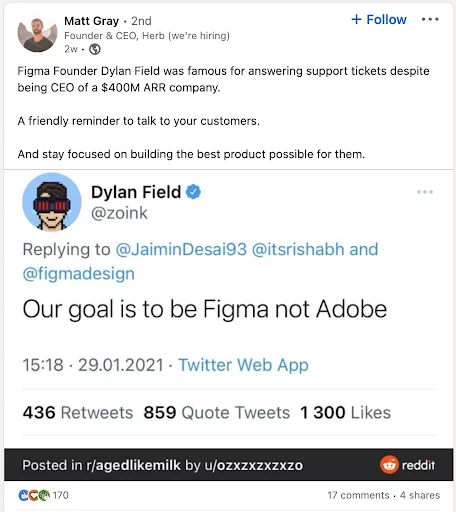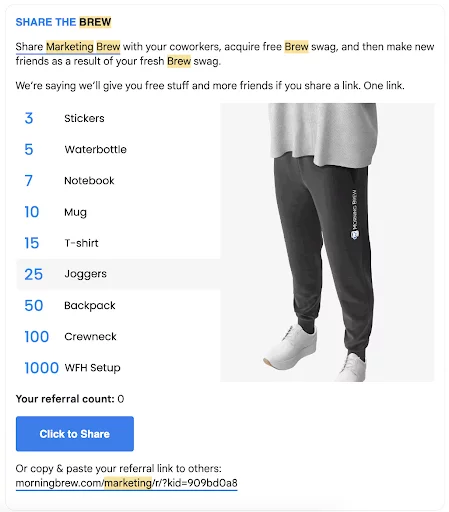What is subscription fatigue?
As more and more companies learn the benefits of subscription commerce, they’re upending their traditional business models to adopt one that offers recurring revenue. The effect of this shift is that more consumers will find themselves signing up to get the products and services they want instead of purchasing them directly.
Subscription fatigue is when individuals start to feel overwhelmed with the number of subscriptions they have. Whether it’s the number of bills, the stacking costs, or just the frustration of subscribing when it’s unnecessary — customers become disaffected.
When this happens, customers may overcorrect and drastically cut back their subscriptions. For this reason, if you run a subscription business, avoiding subscription fatigue should be a priority.
Before we unpack ways to protect against subscriber fatigue, let’s understand why and when it happens.
Why and when subscription fatigue occurs
The point at which subscriptions become too much varies from person to person, but one theory underpinning this phenomenon is The Paradox of Choice.
Too many options can cause subscription fatigue
The Paradox of Choice – The Problem With Too Many Choices
The Paradox of Choice reveals that customers only value having a lot of options up to a certain point. There’s a threshold where it becomes too much to handle. It’s easy to weigh the pros and cons between two choices, but when you have dozens, it becomes nearly impossible to make an informed decision.
Forcing customers to subscribe when they’d prefer not to can also cause subscription fatigue
Another reason subscription fatigue may happen is when customers feel pushed to subscribe when they’d rather not.
As an example of how far subscriptions have gone, let’s look at a simple business model that may not need to be a subscription: a coffee shop. Instead of getting a coffee and plugging in your laptop to get some work done, savvy cafes want you to sign up for their membership.
In exchange for a monthly fee, you get unlimited coffee, discounts, merch, and more. Rather than spending an afternoon being productive, you have to commit to working there regularly. For some, this may be great, but for others, it can be frustrating and make them feel like they have too many subscriptions.
We see something similar with competing streaming services like Disney Plus, Amazon Prime, and Netflix, among others — the fact that you need more and more subscriptions just to keep up with the latest conversations at parties and other social situations.
Subscription fatigue in different types of subscription businesses
The Motley Fool outlined three categories of subscription business in the context of fatigue: essentials, subscriptions that can be substituted or downsized, and non-essentials. A subscription service like Netflix is at risk because increased competition means it can be replaced — i.e. it loses its “essential” status.
What kind of subscription business are you trying to grow? Motley Fool outlines the publicly traded companies that would fit in each. But where would your business fall within your niche?
Essential subscription businesses include:
- Amazon Prime
- Costco
- Chewy’s pet supplies
Subscription businesses with many substitutes include:
- Popular video subscription streaming services
- Popular music subscription streaming services
- Any business in any niche with fierce competition
Finally, non-essential subscription businesses include:
- Food delivery services
- Bike rentals
- Rewards clubs
- Optional services that are likely to get more scrutiny from consumers
Look at your niche. Are you carving out a subscription business that’s essential, or do you have too many competitors that are easy substitutes? Further, is your subscription non-essential? If so, it may be the first to get cut when subscription customers start feeling subscription fatigue.
This is getting very doom and gloomy about the subscription model. The subscription economy is without a doubt alive and growing, and there are plenty of opportunities if you have the right strategies.
Let’s turn to look at actionable tips you can employ in your business today to increase customer retention and squash subscriber fatigue.
Tips on how to overcome subscription fatigue
Below are 4 tactical tips to overcome subscription fatigue.
1. Go above and beyond to deliver an exceptional customer experience
Research by Zendesk shows that high satisfaction levels among customers lead to greater retention, higher lifetime value, and a more reputable brand in the long-term. This isn’t a groundbreaking insight, but it’s often forgotten. Most customers (80%) admit that in the past, they have churned because they experienced bad customer service.
We’re often so busy trying to grow our businesses and bring in new customers that we forget the customer satisfaction of existing subscribers. And in a subscription business, every customer you win drives up your monthly recurring revenue. So don’t forget the value of a loyal customer to a subscription business.
How can we deliver an exceptional customer experience? First, adopt these mindsets:
- Keep a positive attitude and cool head regardless of how challenging a customer interaction is.
- Show empathy towards your customers.
- Build a customer-centric culture (it could make you 60 percent more profitable, after all).
- Be proactive in spotting potential problems for customers and resolving them.
- Honor the promises you make.
Once you have those mindsets around customer satisfaction at the top of your mind, adopt these tactics:
- Shorten your response time for customer service emails.
- Send thank you notes to new customers and existing customers that hit milestones.
- Document everything and make it accessible so customers can solve their own problems.
- Create online forums where customers can ask questions and customer service agents or other customers can provide answers.
In the same vein of delivering an exceptional customer experience, you also want to be flexible. By that, we mean giving customers the ability to switch their plans.
2. Give customers the option to customize their subscription plans
We previously explained that subscription services with lots of substitutes often see subscribers quit or downgrade their plans. Giving them the flexibility to do so may hurt at first, but it’s still better than fully losing them.
When a customer goes to unsubscribe, give them the following alternatives:
- Pause their plan
- Lower their plan
- Change the offerings in their plan
These options nudge subscribers to reconsider a full break. A note of caution: don’t overdo it and provide them with so many alternatives that it overwhelms them. Remember The Paradox of Choice we discussed above.
In addition to these 3 options, survey them and ask why they’re dissatisfied. You may have more responses if you provide multiple-choice answers, but a comment box is even more invaluable if it’s utilized. This qualitative feedback may take more time to collect and analyze, but the insights are well worth the time.
Take, for example, Figma’s CEO, Dylan Field. He became famous for answering support tickets well after Figma became a multi-million dollar company.
3. Don't inundate customers with intrusive communications
We’ve all been there: you drop your email in one website (or eerily none at all), and suddenly your inbox is bombarded daily with unwanted emails. In short, sending junk mail to customers is a quick way to disengage potential customers at best and, at worst, aggravate them so much that they debase your brand on social media.
Try to keep your emails to what’s essential:
- Don’t send promo or sales emails every day. You want them to be special, not annoying.
- Make unsubscribe buttons visible. You pay for subscribers, so don’t waste your money if people don’t want to be on it.
- Make your subject lines descriptive and interesting. Don’t send clickbait, but give people an idea of what’s in the contents of the email.
- Try to keep them personal. People like to buy from people. Try to humanize the person behind the automated communications with images of the sender and avoid marketing jargon.
- Don’t use “no-reply” sender emails. In the same vein of being personal, let people reach you. A faceless email doesn’t encourage engagement.
4. Find new ways to deliver value to customers
The final tip is less concrete but still vital. Find ways to add value to subscribers. Keep things interesting by offering discounts or promotions. Many subscription businesses will gamify the customer experience by offering merch in exchange for sharing affiliate links or enrolling in sweepstakes contests. Morning Brew is an example of a brand that has perfected this with their newsletter.
Likewise, many subscription business owners cater to individuals with similarities. It can be an incredibly powerful retention strategy to build a community for customers to connect. In these communities, members can ask questions, share how they use your products or services, and build relationships.
How can you offer more value to your customers than what they’re paying for directly? Brainstorm a list and prioritize the ideas with the highest potential. Joining a community yourself (like these subscription ecommerce communities) is also a great way to find new avenues to deliver value (if you have the resources, SUBTA’s annual SubSummit conference is definitely worth checking out). In any case, you’ll fend off fatigue by keeping customers excited about what comes next.
Key takeaways
Don’t let subscriber fatigue eat away at your growth. You can summarize all the above tips by remembering to prioritize the customer experience and finding ways to delight them continually.
As the authors of the Agile Manifesto shared when laying down foundational principles for building incredibly digital experiences, “We delight our customers when our products and services not only fulfill their needs and expectations but surpass them.”
To delight customers, you need a subscription platform that makes it easy. Subbly makes it easy to get your subscription business up and running with 100+ powerful features that drive more conversions and delight customers in exactly the right ways to ensure they never even dream of unsubscribing.
If you want to build a subscription business that’s essential, as The Motley Fool outlines, get started using Subbly today. Your first 2 weeks are on us!




